Aloha, Alola! PokéCommunity Daily’s Pokémon Sun and Moon Review
For both new and experienced players, Pokémon Sun and Moon introduce many significant, most welcome changes to the gameplay and the formula. Check out Daily’s extensive review on what’s new.
Story: Aloha, Alola
The setting
The first four generations of Pokémon games have largely been based on Japan, but the influences weren’t made entirely obvious, whether by how it was written, or how it was localized. Team Rocket and its leader Giovanni could be interpreted either as a mafia reference or a yakuza reference. Johto perhaps felt most explicitly like Japan, but it took a whole remake to bring it home. The legends of Sinnoh could be applied just about anywhere. From the fifth generation forward, Game Freak began embracing the idea of representing other countries, and made a bigger effort to make these more convincing. A recent example of this is shown in Pokémon X and Y, where the influences of Paris are even more obvious. You see this from the naming of characters and places, to the Prism Tower, to the way Team Flare works.
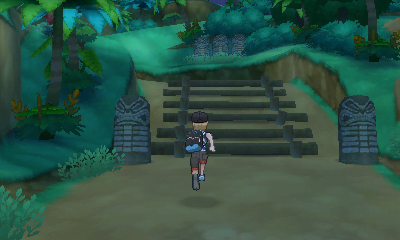
Pokémon Sun and Pokémon Moon drive this point even further with the Alola region, which is based off Hawaii and remote from any of the regions we’ve seen in previous games. As we mentioned before, there are four islands, each with an island guardian.
The Hawaiian influence is quite prevalent in the game, and the graphics help deliver this. There are multiple islands, one with an active volcano; the cities and routes are filled with palm trees; the paths to the shrines are lined with possibly native-made statues; bushes along some routes have hibiscus flowers; and, there’s a noticeable bloom in outside areas that helps convey the heat. Most characters wear t-shirts or tank tops, and shorts. (Joey would have a field day.) The people on the islands revere their Island Guardians; the battle at the player’s sendoff ceremony is even referred to as an offering to the island’s guardian deity.
Like as shown in the Train On trailers for Sun and Moon, the main character has just moved, and it’s made clear that the Alola experience is completely foreign to the player, and it’s likely that a lot of it will be foreign to players too. The games try to capture traditional Hawaiian ways of life through rituals, including trials.
Trials
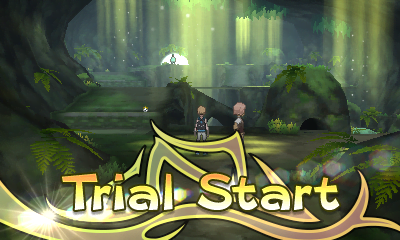
The primary campaign — trials — set Pokémon Sun and Pokémon Moon apart from their predecessors. Previous games had you fight Gym Leaders to earn badges that would earn you the right to challenge the Pokémon League. For the series’ 20-year history, this particular tradition has stuck. There’d always be eight to challenge, you’d run from town to town to challenge them, and then you would challenge the Elite Four to become the Champion. That this has been a big part of the series for the longest time with some fans calling it stale — X and Y not particularly helping with how it represented the Gym challenge — Alola brings to us something fresh.
The games refer to trials as Alola’s rite of passage, like Gyms are to characters in other regions. Designed and supervised by Trial Captains, trials involve battling to some degree — the first one is all about it. Other challenges include finding items or paying attention to certain things as the Captain requires.
At the end of each trial is a Totem Pokémon that must be defeated. These Totem Pokémon are more powerful (and visibly larger) than other wild Pokémon, and each of them have a particular stat boost the moment they enter battle.
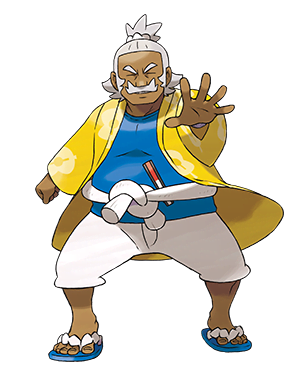
Badges are also a thing of the past. The reward for completing a trial are Z-Crystals, which enable the use of Z-Moves. These are the new plot tokens — the story revolves heavily around them.
You may find the trials to be particularly challenging, too. Unlike Pokémon X and Y where you could use Exp. Share to easily surpass the levels of Trainers and Gym Leaders you’d come across, the Pokémon you encounter, particularly the Totem Pokémon, are likely to faint your Pokémon quickly if you don’t make the right moves. You may find that you’ll need to actually grind to be guaranteed a swift victory.
Completing the island’s trials earns you the right to participate in the grand trial, which is a battle the island’s Kahuna — considered the island’s most powerful Pokémon Trainer. These are perhaps much like traditional Gym battles, and are played up as an important event in the game’s plot. Successful completion allows you to go to another island.
Characters and plot
Pokémon games have all sorts of characters — a good plot needs them. We’ve had many different characters of importance to the plots: rivals and childhood friends who grew emotionally throughout your journey; the professor who you receive your very first Pokémon from; Gym Leaders who, outside of putting up a challenge, have been relatable or played a part in foiling the evil team; the evil team itself of whom you’d clash with frequently and question their ideals; and, a wide variety of other characters, including Trainers, who you’d meet along the way.
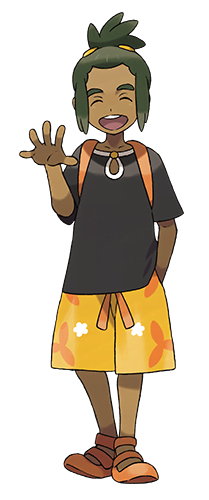
While recent Pokémon games feel like they’ve rushed the characterization and hence made the characters less memorable, perhaps in the interests of speeding the game up, Pokémon Sun and Moon put focus back on the characters and their Pokémon, delivering a heavily story-driven narrative based around trials and the exploration of the many islands. The games give us a cast of characters who are heavily involved with the plot.
Hau, for instance, is someone who remains optimistic for most of his journey. He’s a character who gets out there, and whether he wins or loses battles, he’s there to soak it up and enjoy it. There comes a point later in the game where the way he achieves happiness is challenged, but we’ll let you find that out as you play. The other friend you make in the game is Lillie, who isn’t a Pokémon Trainer. She hides something in her bag that she cannot afford for the evil organization pursuing her to see, and is one of the few people you see in a Pokémon game who doesn’t like battling.
The game’s plot is based around Hau and Lillie — you travel with them both to each of the islands in the game, after all. The player also has an important part in the story — it’s made quite clear by their interactions with you, as well as by other characters, that the story revolves around you and the efforts you make in your journey, too.
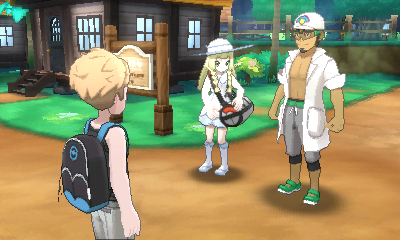
Professor Kukui isn’t so involved with the overarching plot, but he does appear quite a bit, and is super-excited to get you on your journey. He’s known to have taken Pokémon moves head-on, and this is perhaps demonstrated by his knowledge of Z-Moves and the fact he’s often out and about and never back at the lab. Perhaps humanizing him even further is that he also happens to be married — there’s a ring on that finger!
A shortcoming for previous Pokémon games (with exceptions like the fifth-generation games) was the lack of personality or feeling-of-life given to characters such as Gym Leaders. This was a particular issue with Pokémon X and Y, where the Gym Leaders barely made appearances outside of their Gyms and, other than the way they acted and spoke — with most of them being focussed on the battle they were about to do — gave little reason for you to really care about them. With X and Y coming after the fifth-generation Pokémon games, where the Gym Leaders had totally normal occupations and occasionally roamed around, the fact that these games didn’t have any of that was nothing short of a disappointment.
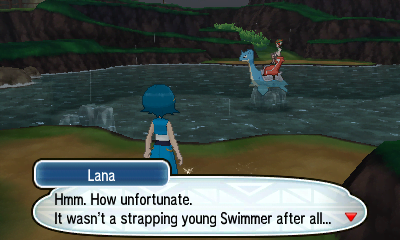
If you liked how the Gym Leaders were represented in the fifth generation, you’ll enjoy how the Trial Captains and Kahunas are handled, too. Hala, the very first one you meet, roams the island and introduces you to your starter Pokémon. You get to learn things about the Captains and Kahunas — their hobbies, what some of them do for a living, and more. Hala has a grandchild you already know about, Lana is a joker and doting big sister, Mallow is somewhat hyperactive, and Kiawe is super-serious. The game asserts their characters by giving them a few moments where they talk and interact with you, and they don’t feel like they were thrown in as after-thoughts or pointless challenges.
The progression of the story is a lot smoother than in other games, and the setting, the integration of its characters, and the delivery of trials help make this so. The story is very well woven into the journey — going through the various trials and collecting Z-Crystals, travelling along the islands, and taking down Team Skull as you go feels much more believable than previous plots. This makes for quite the enjoyable adventure, and we’re keen to see this continue. It’s certainly a good improvement to the story in Pokémon X and Y.
